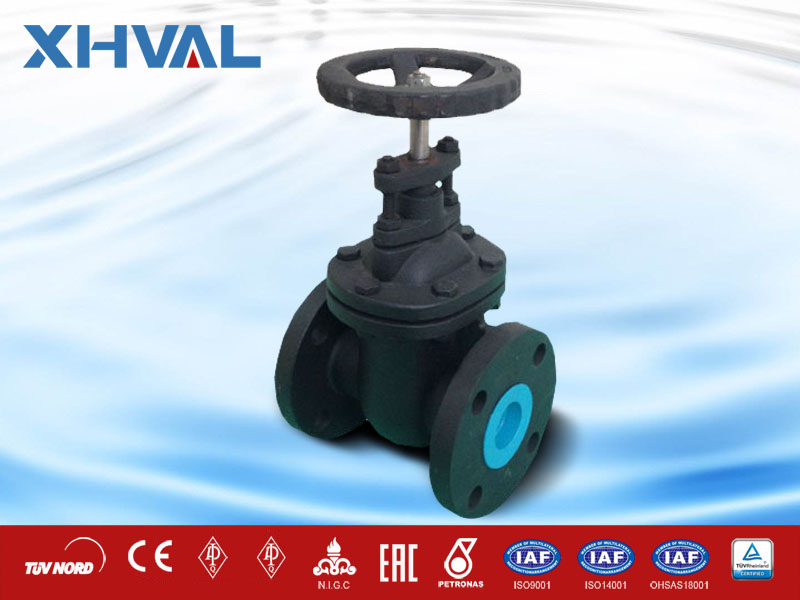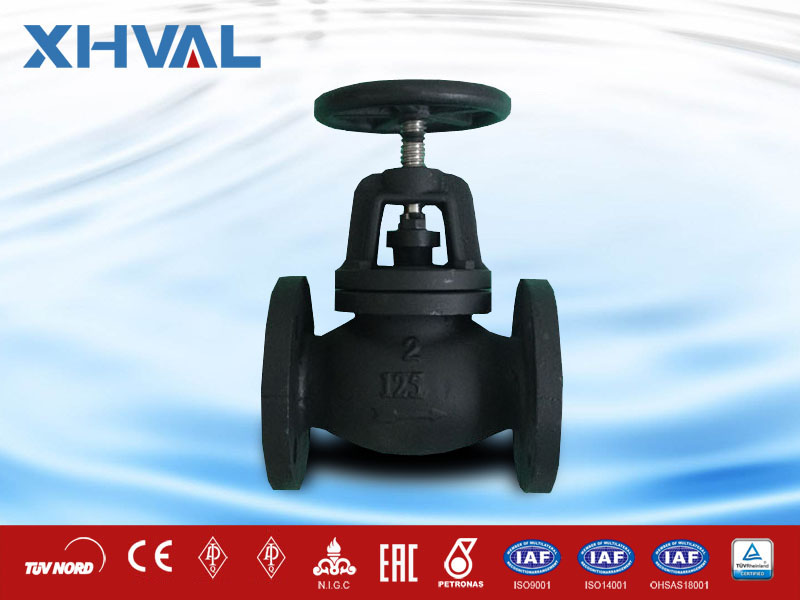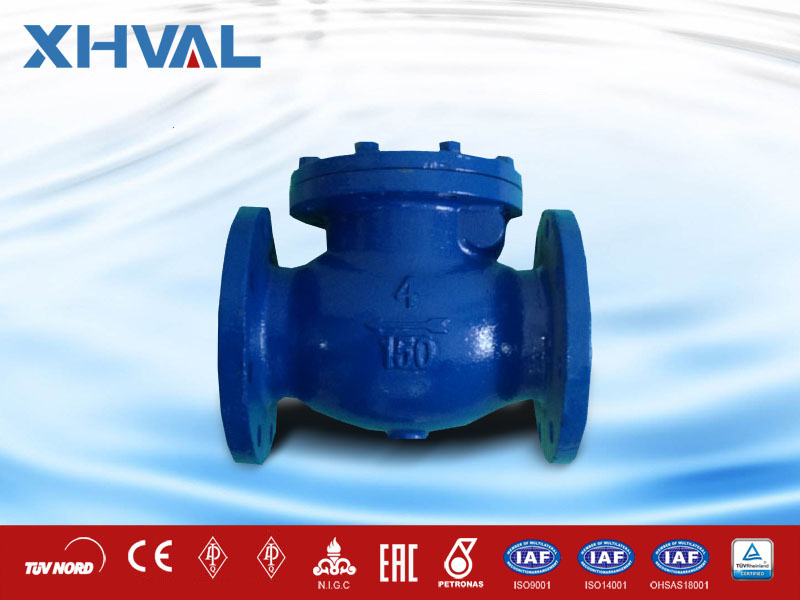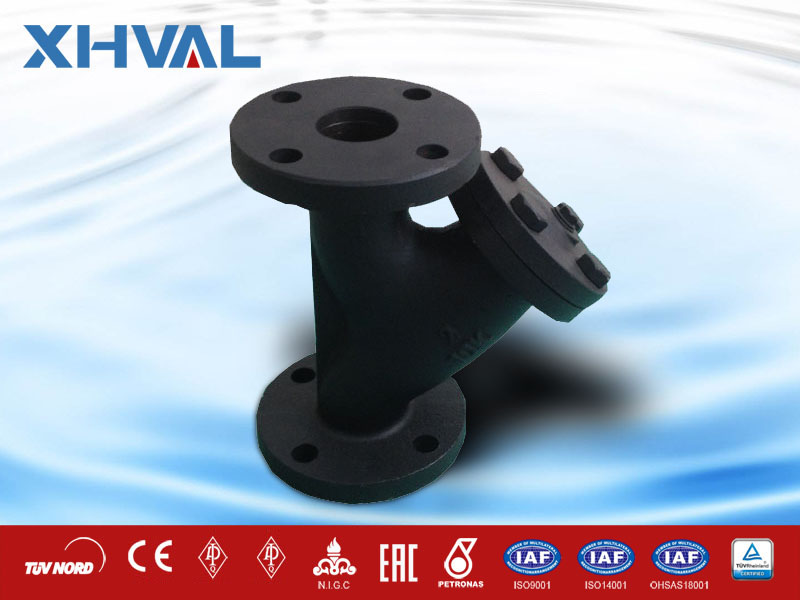Cast Iron Valve
XHVAL is a cast iron valve manufacturer. We offer cast iron gate valves, cast iron globe valves, and cast iron check valves. XHVAL also manufactures industrial strainers made from cast iron.
All You Need to Know About Cast Iron Valves
One of the most popular materials used in valve manufacturing is cast iron. This material adapts to a variety of conditions common to industrial applications. The truth is, it is not only adaptive; it is also one of the superior materials used on industrial valves.
Compared to forged iron, cast iron is more cost-effective. The cast iron valve is a popular choice for low-pressure and low-temperature applications. Specific applications for cast iron valves include air condition services and plumbing operations. Cast iron valves are also common in water and sewer lines of industrial plants.
What Is Cast Iron?
Iron is often associated with casting; both are considered one of the oldest materials and techniques used in valve making.
Cast iron came from reducing the iron ore in a blast furnace. Cast in ingots, these are melted when needed again. To ensure the strength of the cast iron products, other metals are added to the liquid mix.
Cast iron is an alloy that comprises 96-99% iron, 2-4% carbon with some silicon and manganese and other metals. Iron is a great material to work with because of its low melting point. Yet, iron can only be cast because of its tendency to be brittle.
Concerning this, valves made of cast iron are more suitable for low pressure and temperature applications. Valves with more complex designs or those that have more hollow areas are better off being cast. This is because casting provides ease in shaping the valves without adding too much pressure.
What Are the Advantages of Using Cast Iron?
There are good reasons cast iron is still used as one of the primary materials in valves. Listed below are some of the reasons why cast iron is still popular.
Casting provides more design flexibility
Compared to forged valves, cast valves have a more flexible design. For example, globe valve designs are more intricate compared to other types of valve. Valve designs for flow control are more complex. These are better for throttling, thus, needs more to be more efficient to control media flow.
Casting has fewer chances of leakage
To cast valves means to create valves as a whole. Therefore, there are fewer chances for seepage. There are fewer connections in cast iron valves compared to, say, forged valves.
On the other hand, other valve designs are often manufactured in halves. This means more connections can eventually become leak paths.
Cast iron is lightweight
Compared to other metal alloys, cast iron is lightweight. This material is more suitable for medium-sized industrial valves.
What Are the Common Cast Iron Valve Types?
There are four basic cast iron valve types used in industrial applications. The first two on the list are the most commonly used nowadays. While the last two are not as popular today, there are still applications that require malleable cast iron valves and white cast iron valves.
Ductile Cast Iron Valve
This cast iron valve has magnesium or cerium as its added components. Nodular cast iron valve is the other term for ductile iron. Valves made of ductile iron are more malleable and bendable than gray cast iron valves because of the adding of magnesium and cerium. This is more suitable for high demand applications.
Ductile iron valves can fall into 2 pressure classes: Class 150 and Class 300. A valve made of ductile iron with a pressure Class of 150 can withstand 250 psi pressure. On the other hand, a ductile iron valve with Class 300 can keep the pressure of 640 psi.
Ductile iron valves are also water-resistant. These are often the materials for hydraulics and heavy-duty gears. They can carry fluid media with temperatures not over 300 degrees Celsius but not beyond 730 degrees Celsius.
Ductile cast iron valves are used for steam supply applications and high-pressure gaseous applications.
Gray Cast Iron Valve
Gray iron has more graphite compared to other cast-iron types. This contributes to the grayish color of this cast iron type. Of all the cast iron valve types, the gray cast iron valve is the most commonly used for industrial valves. In fact, many valve manufacturers label their gray cast iron valves simply as cast iron valves.
Compared to other types of cast iron valve, the gray cast iron type is the most cost-effective. These are used in low-pressure and low-temperature applications.
Gray cast iron valves can handle temperatures as high as 1,1500C. These has high machinability capacity, damping characteristics, and self-lubricating properties. One disadvantage of this material is its low elastic properties due to its graphite content.
Gray iron valves have two pressure classes: Class 125 and Class 250. Class 125 gray cast iron valves can handle pressure up to 200 psi. On the other hand, Class 250 gray cast iron valves can handle pressure up to 500 psi. Additionally, they can reach a permissible temperature range of 0-200 degrees Celsius.
Gray cast iron valves often have flanged connections. Because they are not as malleable as other types of cast iron materials, welding is not suggested.
Malleable Cast Iron Valve
Malleable cast iron valves have carbide as their additional component. Heat treatment converts carbide to graphite. However, this type of graphite is spherical so it is more malleable compared to the graphite component of the gray cast iron valves.
Malleable cast iron valves can handle a wide range of temperatures from -300C to 3500C. Additionally, these valves have high tensile strength compared to other cast iron valves. This makes malleable cast iron valves less prone to deformation when exposed to high pressure or temperatures. In turn, valves of this kind have fewer chances of leakage.
Another great facet of malleable cast iron valves is their high mass production value. Malleable cast iron valves are more ductile and strong, with properties like that of low-carbon cast steel valves.
These are often found in farm and construction machinery and piping systems because these can retain lubricants. These are also porous so these can trap debris in its surface pockets.
White Cast Iron Valve
White iron has more silicon elements compared to other cast-iron types. This type of iron is harder but not as tough as the other types.
One unique characteristic of white iron valves is that they’re the only members of the cast iron valve family that only contain carbide. The latter did not undergo the chemical transformation to graphite.
While they may be brittle and hard, white iron valves are more resistant to abrasion. Thicker media such as slurries are better for valve components made from white iron. Additionally, they can handle high pressure. White cast iron valves are often found in slurry pump systems.
How Are Cast Iron Valves Manufactured?
One of the most common techniques in cast iron manufacturing is sand casting. It begins with the pattern of the valve. Its material is either wood or metal. The pattern is put in a box. The next step is to pour special sand into the box. This must be packed to hold the pattern.
Once the pattern molded into the sand, the next step is to remove the metal or wood pattern. To ensure the strength of the sand, baking of the mold begins.
For the inner parts, a sand core is placed inside the mold. To ensure proper alignment, there are tiny spacers or chaplets attached to the mold. Once these are in order, pouring of the molten iron begins.
To ensure that there are no defects, certain conditions are in place. One, the temperature should be just right to ensure the molten iron alloy solidifies properly. Also, to avoid gas bubbles or potential crackings, the pouring of the iron alloy should be slow.
Like typical valve manufacturing process, The cast iron valve undergoes several quality assurance tests. This ensures the integrity of the valve. Such tests include radiography. This is one of the tests that check the quality of the interior of the valve. Other tests include the dye penetrant examination and magnetic particle examination. These tests detect surface irregularities.
In Summary
Cast iron is one of the most versatile materials in the valve manufacturing industry. It may be one of the oldest materials for valve manufacturing, but its importance is still as strong as ever. While there are many kinds of valves made of different materials available in the market, the cast iron valve can still hold its own because of its versatility.
Request A free quote
We'd like to work with you
- +86 577 5768 9696
- +86 577 5768 7951
- [email protected]




